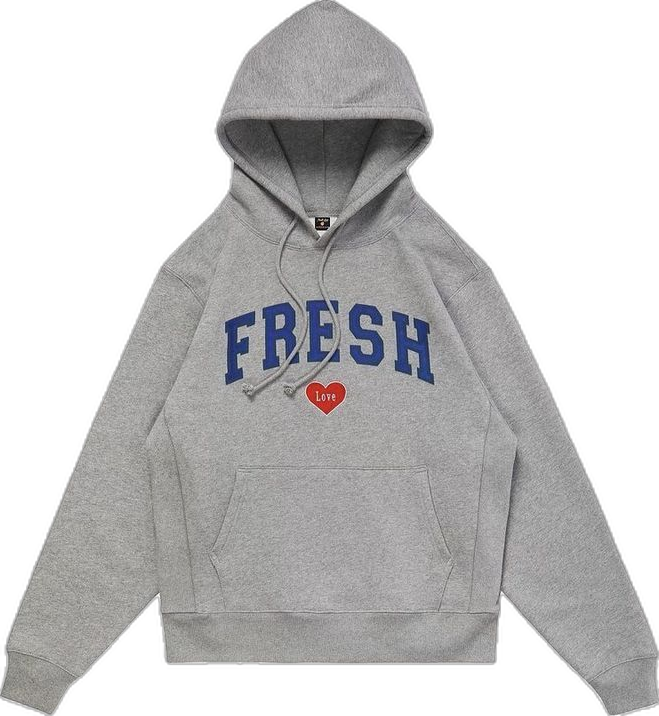From Runway to Street: Adapting High Fashion Trends

The world of fashion is ever-evolving, driven by a powerful interplay between high-end runway shows and everyday street style. While couture collections dazzle on catwalks in Paris, Milan, and New York, the true test of a trend’s longevity lies in its adaptability to real life. Bridging the gap between haute couture and accessible fashion is an art in itself—and today’s style-savvy individuals know just how to make that transition effortlessly. At the heart of this movement are innovative brands like Fresh Love Clothing, which curate collections that channel high fashion aesthetics into wearable street-ready ensembles.
The Evolution of Street Style
Street style has grown from an underground movement into a significant force in the fashion industry. Once associated with youth subcultures like punk, hip-hop, and skateboarding, it now influences luxury fashion houses and dictates seasonal trends. What was once reactive has become proactive—streetwear and everyday fashion are now shaping what appears on runways just as much as the other way around.
Fashion houses such as Balenciaga, Off-White, and Gucci have embraced streetwear elements, blending them with high-concept designs. Oversized silhouettes, bold graphics, and utilitarian accessories that were once confined to urban neighborhoods now dominate international fashion weeks.
Understanding Runway Trends
To adapt runway trends for street use, it’s essential to first understand what these trends are trying to express. Runway shows are less about practicality and more about storytelling. Designers use texture, color, form, and layering to make artistic statements, often pushing boundaries far beyond what most people would consider wearing daily.
For instance, a runway might feature extreme proportions like sky-high shoulder pads or ultra-sheer layering. While these might not translate directly to the street, the core idea—such as power dressing or sensual minimalism—can be distilled and reinterpreted into everyday fashion.
How to Identify Adaptable Elements
Fashion-forward individuals and stylists look at runway trends with a discerning eye. They ask: What is the underlying concept? Is it the silhouette? The fabric? The color palette? Once identified, these elements can be translated into wearable pieces.
Here are some aspects of runway fashion that are often adapted for streetwear:
- Color Trends: If a season’s runways are dominated by neon greens or soft lavenders, those colors often appear in more subdued, wearable pieces like blouses, accessories, or sneakers.
- Silhouettes: Dramatic shapes like balloon sleeves or oversized blazers can be toned down and worn in ways that are office- or street-appropriate.
- Layering Techniques: Layering a turtleneck under a slip dress or an oversized shirt over leggings is a way of emulating high-fashion looks without sacrificing comfort.
Styling Tips for Adapting Runway Looks
Converting a high-concept look into something street-ready requires creativity and an understanding of personal style. Here are some styling tips to help make that transition:
1. Start with Statement Pieces
Choose one standout item inspired by the runway—like an asymmetrical skirt, metallic jacket, or structured blouse—and pair it with basics. This creates a balanced look that pays homage to high fashion without appearing overdone.
2. Use Accessories as Anchors
Accessories are often the easiest and most effective way to bring a runway vibe into your streetwear. Think chunky boots, oversized sunglasses, or a belt bag. These pieces can inject personality into even the most casual outfits.
3. Mix Textures
Runway designers often play with textures—velvet with denim, leather with silk. Recreate these combinations in your daily wear to add depth and interest. For example, pair a satin camisole with rugged cargo pants.
4. Monochrome and Color Blocking
Runways often feature bold color blocking or head-to-toe monochrome. Try wearing a single color from top to bottom, or combine contrasting colors for a more daring yet controlled look.
5. Tailor for Fit
Even the most extravagant runway pieces can be tamed with good tailoring. A well-fitted blazer or pants can elevate a look while keeping it grounded in everyday practicality.
Case Study: Streetwear Meets Couture
Consider how brands like Louis Vuitton and Dior have collaborated with streetwear icons like Supreme and Travis Scott. These partnerships have not only blurred the line between high fashion and streetwear but have also proven that there’s a real demand for fashion that’s both expressive and accessible.
On a smaller scale, emerging brands are replicating this synergy by creating collections that are runway-inspired but tailored for the sidewalk. They offer cropped jackets in bold prints, graphic tees with architectural lines, and joggers made from luxurious fabrics—items that embody runway energy while still being comfortable enough for a coffee run.
Celebrity Influence: Making It Mainstream
Celebrities and influencers are often the bridge between high fashion and street style. They are usually the first to wear a designer’s latest collection outside the runway context. When Rihanna steps out in an avant-garde Margiela piece or Timothée Chalamet pairs a silk shirt with combat boots, they create a template for others to follow.
These icons show us that it’s not about copying a look piece-for-piece, but about interpreting the mood. Their influence helps democratize high fashion, making it more relatable and inspiring the masses to take sartorial risks.
The Role of Social Media
Platforms like Instagram, TikTok, and Pinterest have made it easier than ever for high fashion to trickle down into street style. Fashion influencers decode runway shows almost instantly, offering DIY versions, affordable alternatives, and styling hacks. This immediacy has accelerated the runway-to-street cycle, empowering everyday consumers to experiment with trends in real time.
Apps and hashtags have become modern-day lookbooks, allowing users to share how they’ve translated runway glam into wearable, everyday outfits. Whether it’s #OOTD (Outfit of the Day) posts or viral fashion challenges, these trends travel fast and adapt even faster.
Ethical and Sustainable Adaptations
As consumers grow more conscious of fashion’s environmental impact, there’s a growing demand for sustainable ways to engage with trends. Fast fashion may offer quick fixes, but the emphasis is shifting toward mindful consumption.
One way to adapt runway trends sustainably is through thrift shopping or upcycling. Vintage stores are treasure troves of unique pieces that often echo past runway styles. DIY enthusiasts also find creative ways to reconstruct old garments into trend-forward pieces, combining style with sustainability.
Brands that focus on ethical production and eco-friendly materials are also joining the conversation, proving that fashion doesn’t have to compromise values for the sake of trendiness. Incorporating high-fashion elements into a sustainable wardrobe is no longer a contradiction—it’s a necessity.
Adapting Trends Across Different Cultures
Globalization has led to a beautiful blend of cultural influences in fashion. Runway trends often take inspiration from various ethnic motifs, fabrics, and traditions. When adapting these trends to street style, it’s important to honor their origins rather than appropriate them.
Incorporating traditional elements—like a kimono-inspired jacket or African Ankara prints—into modern fashion should be done with respect and awareness. When done thoughtfully, this fusion enriches personal style and reflects the global nature of modern fashion.
Fashion for All: Inclusivity in Trend Adaptation
The democratization of fashion means that trends should be accessible to all—regardless of size, gender, age, or ability. Adaptive fashion lines, plus-size collections, and gender-neutral pieces are making it easier for everyone to engage with high fashion in their own way.
Runways are slowly becoming more inclusive, and this change is being mirrored on the streets. Adapting high fashion isn’t just about what’s trending—it’s about finding what works for your unique body, taste, and lifestyle.
Conclusion: The Art of Fashion Translation
Adapting high fashion from the runway to the street is more than just a styling exercise—it’s a cultural phenomenon. It reflects how people engage with art, expression, and identity in their everyday lives. As runways continue to innovate and streetwear continues to evolve, the boundary between the two grows ever thinner.
Whether you’re wearing a deconstructed blazer inspired by Paris Fashion Week or a minimalist outfit with Milanese influences, your street style becomes a canvas for personal interpretation. With brands like Fresh Love Clothing leading the way in making fashion expressive yet wearable, the transition from catwalk to sidewalk has never been more exciting—or more attainable.
Fashion isn’t about copying what you see—it’s about translating it. And in that translation, you find your voice.




